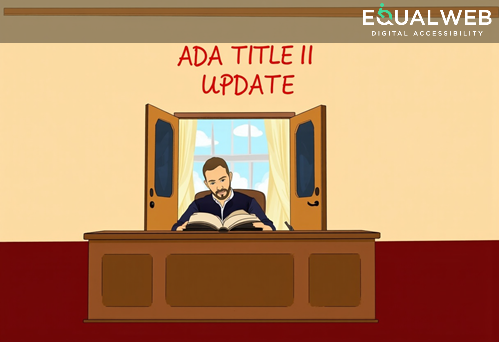AI-Powered Accessibility Solutions
Artificial Intelligence (AI) is playing a growing role in improving
web accessibility. AI-powered accessibility tools can identify and correct accessibility issues in real time, offering quick fixes for
WCAG compliance gaps. These tools leverage machine learning and automation to improve screen reader compatibility, suggest alt text for images, and enhance keyboard navigation. However, while AI can be beneficial, it should be combined with
manual accessibility testing to ensure full accessibility compliance.
Voice Recognition and Assistive Technologies
With the increasing adoption of voice assistants like Google Assistant, Siri, and Alexa, voice recognition is becoming an essential accessibility feature. Websites and applications are incorporating voice-based navigation, just like our
AI widget assistant, enabling users with mobility impairments to interact with digital content effortlessly. Implementing voice command functionalities ensures that users who rely on assistive technologies have a seamless browsing experience.
Inclusive Design as a Standard Practice
Accessibility is shifting from being an afterthought to a core design principle. More companies are adopting inclusive design methodologies, ensuring that accessibility is built into websites from the initial development stages rather than added as a later fix. This includes creating accessible color schemes, responsive layouts, and adaptable text sizes that cater to all users.
The Rise of WCAG 2.2 and Future Compliance Standards
With the release of
WCAG 2.2, new guidelines are focusing on improving accessibility for users with cognitive and learning disabilities, as well as enhancing mobile accessibility. Organizations need to stay proactive in adopting these new requirements to ensure ongoing compliance and avoid potential accessibility lawsuits.
Captioning and Transcription Becoming the Norm
With more content being delivered in video and audio formats, the demand for accurate captions and transcripts is growing. Automated tools powered by AI are making captioning more efficient, but human review remains essential for accuracy. Providing captions and transcripts not only enhances accessibility but also improves SEO rankings by making content more searchable.
Mobile Accessibility and Progressive Web Apps (PWAs)
As mobile usage continues to dominate web traffic, ensuring mobile accessibility is more crucial than ever. Websites must be designed to function flawlessly on different screen sizes and devices. Progressive Web Apps (PWAs) are gaining traction as a way to offer fast, accessible, and engaging experiences with offline capabilities, making content more accessible to users with limited internet access.
Continuous Accessibility Audits and User Testing
Ongoing accessibility audits and user testing are becoming industry best practices. Organizations are recognizing that accessibility is not a one-time fix but an ongoing commitment. Engaging users with disabilities in real-world testing ensures that accessibility improvements are practical and effective.
Conclusion
The landscape of web accessibility is rapidly evolving, and businesses that stay ahead of these trends will create more inclusive, compliant, and user-friendly digital experiences. Implementing AI-driven solutions, embracing inclusive design, and prioritizing WCAG 2.2 compliance will help organizations meet accessibility standards and improve usability for all visitors.
For expert web accessibility solutions, we provide cutting-edge tools and services tailored to your needs. Contact us today to stay compliant and ensure a fully accessible digital experience.




